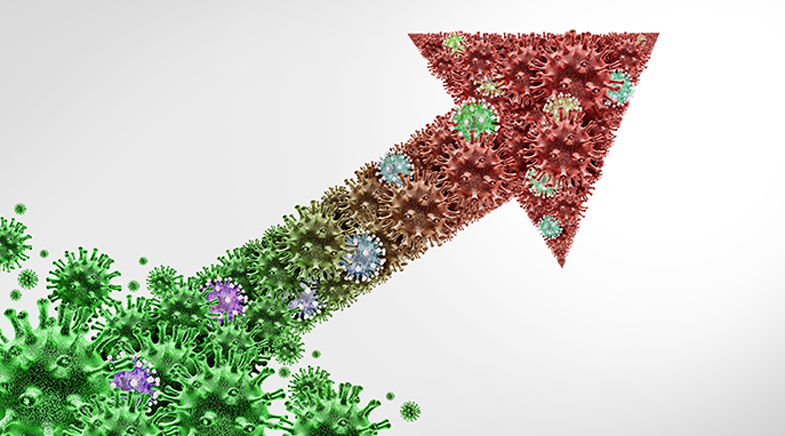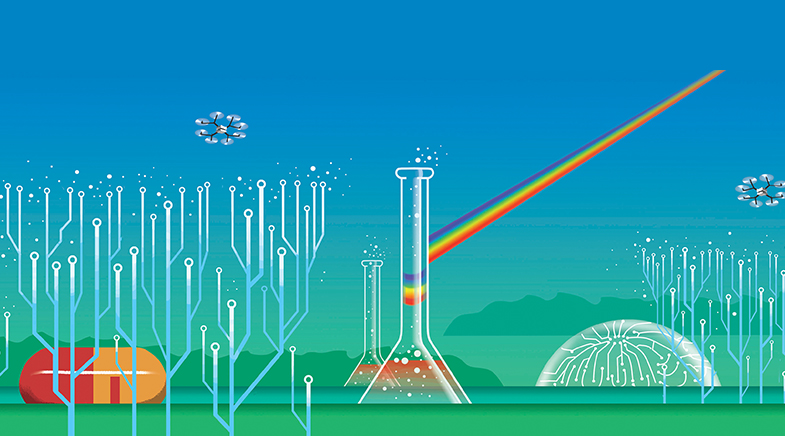One-pot solution
-
- from Shaastra :: vol 04 issue 04 :: May 2025

Researchers have simplified access to bicyclic scaffolds, which serve as the building blocks of complex molecules.
Chemists at the Indian Institute of Technology (IIT) Madras have devised a strategy to create complex, caged 3D amine molecules from abundantly available 2D organic salts. Such 3D amine molecules are critical in drug development as they help improve drug solubility, target selectivity, and efficacy. These tertiary amine-containing cage-like molecular structures are the backbones of various bioactive natural products. Their many derivatives find widespread applications as reagents, ligands, and catalysts in organic synthesis.
The synthetic platform created by a team led by Mahiuddin Baidya, Professor of Chemistry at the institute, uses a cascade of annulation (ring-forming) reactions involving two commonly used feedstock reagents to make cage-like molecular structures containing nitrogen atoms. The work is significant because it simplifies access to bicyclic scaffolds, which serve as building blocks for synthesising more complex molecules or as ingredients in pharmaceuticals.
In a paper published in Chemical Science (bit.ly/Baidya), the scientists demonstrated the innovative strategy by synthesising caged tertiary amines from two distinct azolium salts derived from isoquinoline and pyridine compounds.
"Our motivation was to create a synthesis platform that could be used by the synthetic chemistry community and pharmaceutical industry to make these 3D molecules in a rapid and cost-effective manner," says Baidya.
Currently, such molecular scaffolds are made in a stepwise manner. This process has many drawbacks. There are too many stages involved, with each step having different yields. Apart from being expensive and wasteful, the method generates a mixture of products, compromising the yield.
The current process has many drawbacks. Apart from being expensive and wasteful, the method generates a mixture of products, compromising the yield.
"Ours, on the other hand, is a one-step reaction. It involves a reaction between two aromatic heterocyclic compounds (a heterocyclic compound is a ring structure with atoms of at least two different elements) containing nitrogen atoms. Usually, if you want to make a 3D caged framework from planar organic molecules, their aromaticity has to be destroyed. This is because aromaticity makes them stable, hindering the reaction," says Koushik Patra, Baidya's doctoral student and the paper's first author.
The one-pot reaction system developed by the researchers not only dearomatised both the compounds, but formed a 3D caged tertiary amine bearing two new rings and four new bonds. "All these reactions happen simultaneously," Patra points out. The scientists found that the yield is optimal at 60° Celsius.
"This is an important work and will be of relevance to the pharmaceutical industry," says Akkattu T. Biju, Professor of Organic Chemistry at the Indian Institute of Science, Bengaluru. "The current trend in medicinal chemistry is to convert planar molecules to three-dimensional structures as the 3D molecules have better metabolic stability," says Biju, who is not associated with the study.
Have a
story idea?
Tell us.
Do you have a recent research paper or an idea for a science/technology-themed article that you'd like to tell us about?
GET IN TOUCH














